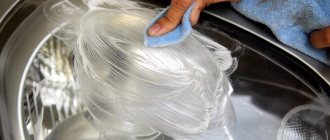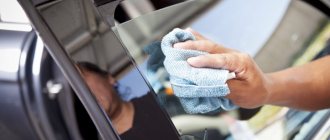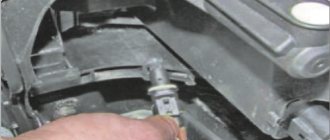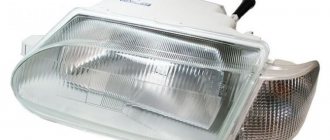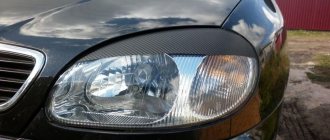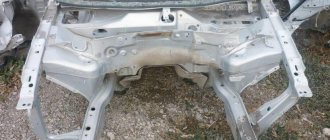Hello, dear friends! Today we will talk to you about such a topic as tinting rear lights. To be more precise, I will tell you what methods can be used to perform such a procedure, how legal it is and whether you should be afraid of fines.
In fact, this procedure did not become popular in 2017 and certainly not in 2022. But now I’m increasingly hearing questions about whether it’s legal to do it yourself.
Some argue that tinting is completely prohibited. And those who try to tint the optics with red film will immediately receive a huge fine or even lose their license for a whole year.
It is necessary to dispel some common myths and tell everything as it is. Let's talk both about the potential fine and about ways that allow you to tint the rear lights of your own car with your own hands without unnecessary problems.
Let's turn to GOST
You probably know that there are rules and laws regarding tinting car windows. Just recently I talked about removable tinting, and we also discussed the issue of curtains for a car. I advise you to refresh your memory and read the materials again.
In addition, I would suggest that you familiarize yourself with removable tinting on a rigid base, the link to which will be here, and removable silicone tinting with a link here.
Now let's talk specifically about the rear lights. There are no requirements for their tinting. There are only regulations for the operation of automotive lighting equipment. Regarding the rear optics, it states that only yellow, red and orange light can be used. All others are prohibited.
There is one correction here. To illuminate the reversing lamp in the Russian Federation, only white light is used, as well as to illuminate the license plate.
These are the only official rules regarding this matter. That’s why you need to rely on them when you decide to tint the rear optics. If any color other than those listed is used, when recording this fact, law enforcement officers will classify this as an offense. Therefore, you will be issued a fine.
Potential penalties
If there is tinting on the rear optics that does not correspond to the characteristics prescribed in the Code of Administrative Offenses, then the driver of the vehicle will be fined.
Only here there are important nuances. The thing is that in the current legislation there are no specific clauses that relate specifically to rear optics. Just don’t think that it’s now legal to tint your headlights any color you like.
Here, traffic police officers will rely on Article 12.5 Part 1 of the Administrative Code. That is, they will charge you with a violation due to vehicle malfunctions in accordance with the requirements for permitting a vehicle to operate. If your taillights are in poor condition, get ready to receive a fine of 500 rubles.
Drivers note that traffic police officers rarely issue fines for such violations. And if you tint the optics without changing the color of the instruments, then there will be no problems at all.
Even though there is practically no threat of a fine in this situation, it is still necessary to remind you about the methods of paying fines. A link to interesting and useful material about this will be here.
Which low beam lamp is suitable for Priora?
Suitable vehicle years: 2007, 2008, 2009, 2010, 2011, 2012, 2013, 2014, 2015, 2016, 2022, 2022.
The H7 55W bulb is installed at the factory:
- 55 is the power in watts,
- H7 - base type.
Quick comparison: the best low beam lamps for Lada Priora
| Model | Peculiarities | Rating | Link |
| Philips X-treme Vision | very bright | ★★★★★ | Buy |
| Philips LongLife EcoVision | inexpensive and durable | ★★★★✩ | Buy |
| Bosch Pure light | inexpensive, universal replacement for standard lamps | ★★★★✩ | Buy |
Philips X-treme Vision - the brightest low beam bulbs
Features declared by the manufacturer:
- up to 130% brighter white light,
- increase the lighting area in front of the car by 45 m,
- high quality quartz glass,
- Patented technology provides more powerful light output.
Designed for perfect visibility and unsurpassed quality.
Country of origin: Poland.
What we like best: White and very bright light.
Test results
Good ADAC score, results:
- very good road lighting,
- short service life,
- relatively expensive (but each lamp is tested at the factory).
Auto Express test winner. According to the measurement results, the border of the bright light spot is 75 meters from the car.
Philips LongLife EcoVision - durable lamps for Priora
Features declared by the manufacturer:
- high strength quartz glass,
- resistant to temperature changes and vibration,
- high internal pressure provides more powerful light,
- protect headlights from harmful ultraviolet radiation.
Country of origin: Poland, Germany.
What we like most: They should last much longer than regular lamps.
Bosch Pure light
Features declared by the manufacturer:
- a universal series of high-quality products for passenger cars,
- indicators as close as possible to standard lamps,
- certified by ECE (Economic Commission for Europe),
- do not transmit the ultraviolet spectrum to protect the headlights.
The package contains one lamp.
Country of origin: Poland, Germany.
What we like best: well-known manufacturer, characteristics - the same as standard lamps.
Bosch lamp test results
ADAC satisfactory rating, results:
The Pure Light Bosch is a typical standard lamp. All ratings are average.
Tinting methods
I quite often see how the rear optics are tinted on domestic cars like Lada Priora, Grant, Vesta, Kalina, more classic VAZ 2114, 2110, etc.
But tinting also looks good on foreign cars such as Mazda 3, Hyundai Solaris, Ford Focus. The question here is rather what material to use and how well the work itself is done.
Since we have already decided whether such tinting is allowed, we can move on to the topic of creating such a tuning element. It is definitely not prohibited, although it is carried out within certain restrictions. St. Petersburg, Moscow and many other cities offer a wide list of tuning studios where you can tint your optics.
Before you make a decision, think about how exactly you will do it. Be sure to look at the photos of the finished options and evaluate the proposed methods. There are three methods in total.
- Varnish. The use of varnish is quite common, although it is not considered ideal. It has its nuances and shortcomings;
- Liquid rubber. A relatively new method, characterized by an exquisite visual effect after application. In my personal ranking, liquid rubber takes second place;
- Special films. Everyone recognizes that film tinting is the most profitable, spectacular and effective. Even if the price is slightly higher compared to varnish.
Now we will consider each method separately to bring some clarity.
Until films became widespread, everyone used varnish. But even in our time there are car enthusiasts who prefer this option.
To tint the taillights, you need to buy a can of special varnish. It is applied in several layers after the previous one has dried. The number of layers determines the degree of darkening of the headlights.
If you want to do this with a spray can yourself, you will need:
- thoroughly clean the surface to be treated;
- cover the paint layer of the car around the lights with paper or polyethylene;
- or dismantle the optics completely so that the paint does not get on other parts of the body;
- apply the first layer and wait until completely dry;
- apply a second layer and also wait until the paint dries;
- Carry out a similar procedure on both sides of the car until the desired darkening is achieved.
Remember that it will be impossible to restore the lights after applying varnish. You'll have to buy new optics.
Liquid rubber
A relatively new method based on the use of liquid rubber. Moreover, in Russia, PlastiDip products are the most popular.
Liquid rubber is sold in the form of spray cans or in cans, the contents of which are poured into the spray gun. To tint the headlights, special transparent rubber is used.
When a layer of material is applied, the optics acquire a matte and slightly darkened structure. Rubber can be used to quickly and easily improve the appearance of your lights. The material dries quickly and is removed from the surface.
Film
Objectively, the best material for tuning taillights is special high-quality films. They are made specifically for rear lights. Additionally, they have a damage protection function.
Its advantages include:
- adequate price;
- high quality;
- long service life;
- ease of application;
- protecting the headlight housing from damage;
- possibility of dismantling;
- good light transmittance;
- minimum complaints from traffic police officers;
- wide choose.
If the problem is with the light bulb
Sometimes the reason why the headlights don't shine is so obvious that you have to do very little. It’s worth remembering: if the light doesn’t work well at home, the first thing we do is check the light bulb installed in the lamp. The same logic should apply to a motorist who is faced with poor performance of lighting fixtures in a car.
Problems with the light bulb can only be eliminated by replacing it. This procedure occurs differently on different cars. However, most often it does not cause car owners a lot of trouble.
Installation of LEDs and overlays
A fairly simple way to transform your Priora is to buy ready-made “eyelashes” in specialized tuning stores. However, it will be much cheaper to make them yourself. To do this, just take tubes or a piece of plastic (an alternative is vinyl film) and cut them into thin lines with a stationery knife. You can curl future “eyelashes” with your own hands using a hair dryer and soap solution. They are then attached to the car body using double-sided tape, glue or sealant.
Some drivers believe that “angel eyes” tuning looks much more impressive and useful in poor lighting conditions of Russian roads. It involves attaching LEDs to the headlights or taillights.
For this DIY upgrade you will need:
- disassemble the front or rear headlight, having previously dismantled the element;
- stick masking tape on the outer part of the glass of the optics, which will prevent it from being damaged;
- bend the plastic sides (brackets) of the optics, under which the reflector is located;
- heat the sealed adhesive with which the glass is fixed in the headlight using a household or construction hair dryer and remove the glass;
- remove the reflectors using a Phillips screwdriver. Don’t forget to cover the turn signal lens with tape for protection;
- Apply several layers of black paint to the reflector. This, combined with bright LEDs, will provide a greater tuning effect. Let the paint dry;
- take an LED strip with a cross section of 2.6 mm. Remove the reflector's metallic backing, bend the tape into a circle and attach it using fasteners or glue;
- After the glue has dried (about 2 hours), reassemble the headlight or lantern. Don't forget to re-apply the sealant to the glass.
Glass polishing
Experts recommend periodically polishing polycarbonate lamps to maintain their impeccable appearance. But this procedure should be approached wisely so as not to add damage to the surface.
What is necessary
For high-quality polishing of lighting fixtures you will need the following consumables:
- a couple of buckets of purified water;
- paste intended for polishing lampshades. It comes in two types - abrasive and non-abrasive. Both types will be useful;
- a pair of microfiber cloths;
- several types of sandpaper, the grain size of which will be in the range of 800–2500 units;
- adhesive tape.
Also, when polishing, you cannot do without some tools:
- polishing machines. Many people don’t have a special unit, and the purchase will cost a pretty penny. Therefore, for polishing you can use a drill to which an attachment with a polishing wheel is attached;
- two polishing wheels of different hardness. One of them should be hard, white or orange, and the second should be soft, black;
- a spray bottle from which you will spray clean water onto the circles.
We paste over
First of all, wash the headlight. There should be no grains of sand left on it. After washing, the lamp should be allowed to dry. You can spend this time covering the perimeter of the ceiling with tape. This is necessary so that if the sandpaper slips, the painted body parts adjacent to the lamp will not be scratched.
Cleaning up
Then we start cleaning. We take sandpaper with the coarsest grit we have and begin to rub the surface with it. Coarse-grain paper effectively removes chips and scratches.
Next, when rubbing, we gradually change the paper to a more grainy one. This material will eliminate traces of work.
When working with paper, do not forget to periodically wet its surface, as polycarbonate particles can quickly clog it.
When stripping, it is recommended to make circular movements, as well as move your hand crosswise.
Don't be alarmed if the plastic becomes even cloudier after grouting. The main thing is that the old chips and scratches no longer remain on it.
Polishing with a machine
First, attach a hard polishing pad that is yellow or white in color. A little abrasive paste is applied to it. We begin to polish the plastic until it is no longer matte.
We must not forget that friction causes objects to heat up. Make sure that the polycarbonate does not begin to melt as a result of prolonged polishing. Since the stain formed due to exposure to high temperatures cannot be removed.
After finishing polishing, wipe the surface with a dry microfiber cloth.
Next, we attach a softer polishing wheel, which is black, to the machine or drill. Apply a little non-abrasive paste to it. It will hide traces of the work carried out and give the lamps a glossy sparkle.
Polish until the entire headlight is evenly shiny.
After this, the transparent surface must be washed with clean water.
Glass
It is worth noting that glass headlights can be polished in approximately the same way, but you need to remember some nuances:
- You should not start polishing if there are deep chips or scratches on the headlight. You can cut yourself on their edges or damage polishing wheels and cloths. Glass surfaces with major damage are first filled with a special colorless polymer, which is dried under ultraviolet lamps, and then polished with an abrasive paste.
- The glass headlight needs to be watered more often during the polishing process.
Headlight tinting
You can tint the headlights on the Priora yourself using the following means:
- black tint film;
- black spray paint. Unlike film, it is applied in several layers.
In some cases, the headlights on a Priora are tinted not black, but in a different color that matches the shade of the body. You need to understand that applying tinting will worsen the visibility of the road surface at night. Therefore, in order to avoid accidents, such modernization is most often carried out on car lights.
To install the tint yourself, cut out the required section of the film. The glass (reflector) of the lantern is moistened with a soap solution or water, and the film is applied there by heating it with a hairdryer. If paint is used, you will need to remove the glass and apply it to the inside of the lantern. Possible incomplete painting (pasting), but application of a pattern.
I want to darken the rear lights on a car, but I don’t know what’s best, some say varnish is better, some say film, help, give advice) it’s very necessary) the faster the better)
Comments 29
Yes, tights are actually the coolest option, they cost less and they look cooler!
I have a little idea, when I take a photo I’ll post it)
Pull your tights over the headlights))
I bought a film from a company I don’t remember, rolled it up in red, it’s really cool and it shows through clearly! the film itself is transparent for tinting headlights, that’s what I said in the store, they gave me the price of 450 rubles for 1m x 1m! so the simplest and best option)
I don't like red((
Oracal red film looks super.
I don't want red(
Just now from the garage, I was gluing the lanterns) Oracal8300 film No. 73 Spray the lantern, the film with soapy water, apply it, smooth it, and then heat it with a hairdryer and pull it to the sides! It stretches very well! The main thing is to warm it up well! (an ordinary household hairdryer) Light transmission is not much different from the stock! I looked at the sun during the day and everything is clearly visible! About road accidents “in the ass” - it’s already been discussed somewhere, CRAZY!, for ratoseev there is also a 3rd stop under the glass! ))) P.S. When you pull, don’t forget to tighten the side of the light, which is closer to the trunk! It’s visible!
>
Causes of bad light
If your headlights aren't bright enough, it's most likely due to one of the following:
- damage to contacts;
- the lampshade is clogged or damaged;
- in a faulty or old light bulb;
- in cloudy glass;
- due to improper lighting adjustment.
If the low beam headlights are dim, but you have no complaints about the performance of the high beam ones, then most likely you should look for the cause in the outgoing contacts, incorrect adjustment or a bad light bulb. Since if there were problems with the lampshade, any light would not work well.
If one headlight burns brighter than the other, it means that the fault must be looked for in its device.
Now that we've looked at the possible reasons why your headlights are dim, it's time to talk about how to make your headlights shine brighter.
Will on-site elimination help avoid a fine?
This question can be answered negatively. Eliminating the conditions that led to the violation on the spot, if such a possibility exists, is the responsibility of the car owner, which will not have any effect on the fine.
This, again, is explained by the Road Traffic Rules, where clause 2.3.1. which obliges the driver to ensure the proper condition of the car while on the road. That is, if a malfunction is detected, the driver must fix it in any case. But the violations have already been recorded and identified, so there is no opportunity to avoid a fine.
High beam lamps for the restyled Lada Priora
Suitable vehicle years: 2013, 2014, 2015, 2016, 2017, 2022.
H15 55W high beam lamps are installed at the factory:
- 55 is the low beam power in watts,
- H15 - lamp base type.
Osram Cool Blue Intense
Features declared by the manufacturer:
- bluish white light, similar to xenon,
- color temperature up to 4200 K,
- 20% more light.
There is one piece in the package.
Country of origin: Germany. Article: 64176CBI
What we like best: Bright bluish-white light, similar to xenon.
Philips Standard
Features declared by the manufacturer:
- standard lamp,
- indicators as close as possible to standard lamps.
High beam lamps of the pre-restyling Lada Priora
Suitable vehicle years: 2007, 2008, 2009, 2010, 2011, 2012, 2013.
H1 55W high beam lamps were installed at the factory:
- 55 is the low beam power in watts,
- H1 - lamp base type.
Quick comparison: the best high beam lamps for the pre-restyling Priora
| Model | Peculiarities | Rating | Link |
| Bosch Gigalight | very bright white light | ★★★★★ | Buy |
| Philips Vision | optimal price-quality ratio | ★★★★✩ | Buy |
| Philips LongLife EcoVision | inexpensive and durable | ★★★★✩ | Buy |
Bosch Gigalight
Features declared by the manufacturer:
- up to 120% more light,
- extremely white light.
Country of origin: Hungary.
What we like best: Bright white light, and it's Bosch!
Philips Vision
Features declared by the manufacturer:
- visibility up to 30% better than standard lamps,
- high quality quartz glass,
- protect headlights from harmful ultraviolet radiation.
The package contains one lamp.
Country of origin: Poland, Germany.
What we like most: Value for money.
Philips LongLife EcoVision
Features declared by the manufacturer:
- high strength quartz glass,
- resistant to temperature changes and vibration,
- high internal pressure provides more powerful light,
- protect headlights from harmful ultraviolet radiation.
Country of origin: Poland.
What we like most: They should last much longer than regular lamps.
